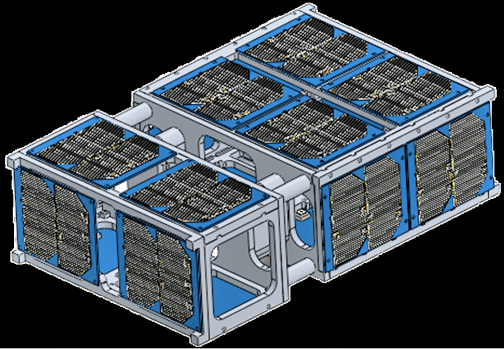A team of engineering students at Western Michigan University is still attempting to get their satellite into Earth orbit.

An artistic rendition of WMU's WALI CubeSat.
Image is courtesy of WMU College of Engineering.
The Western Aerospace Launch Initiative, or WALI (“Wally”), began working on the design of the "CubeSat" in 2016. Western was among ten schools selected for the program by the US Air force University Nanosat Program. The smallsat would be launched on board a NASA rocket. WALI faculty advisor Kristina Lemmer, an assistant professor at WMU's College of Engineering, said the project is in the last part of the design process.
“Students like the hands on stuff so the design of a satellite, while we’re getting to the point where we can get to the prototyping and doing experiments and some hands-on stuff. It takes a long time to get a finished product,” said Lemmer.
WMU Assistant Engineering Professor Jennifer Hudson is also a faculty advisor for Western’s team. She says this is just the beginning. “We hope that after this one we will build more and more satellites and start to send more students into the aerospace industry, equip them with a lot of skills coming out of school so that they’re prepared to take on a lot of roles in aerospace.”
Hudson says the WALI team is about 75 percent done with the design of its CubeSat. She says the team hopes to have the tiny spacecraft ready for launch by a NASA rocket by the end of 2017.
The Western Aerospace Launch Initiative (WALI: rsowali.wixsite.com/wali-kzoo) is a nonprofit student organization at Western Michigan University with the primary objective of building smallsats. In December of 2015, the organization received a grant from the University Nanosat Project (UNP) to build a CubeSat. This satellite will perform on orbit, inter-satellite, electric propulsion device, plasma plume diagnostics. This will occur by the satellite splitting into two satellites—one satellite will generate a plasma plume from an electric propulsion device and the other will perform diagnostics on the plume. The organization is currently performing breadboard testing various systems.
Article sourced from Western Michigan University, by Adia Robbins.

